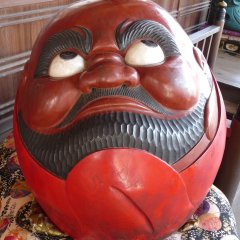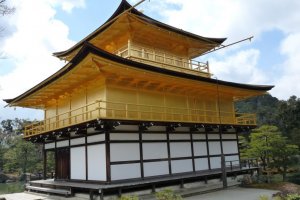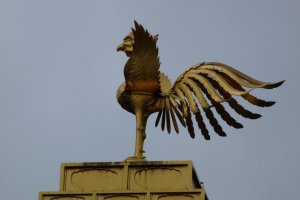To the north-west of Kyoto is Kinkaku-ji, also known as the Golden Pavilion. This is a stunning place; immediately breathtaking. The hall sits by a pond surrounded by a magnificent Japanese garden. The building is much smaller than I expected, yet this doesn’t detract from the wonder of it at all. The hall has three stories constructed of gold-plated wood and the sun shines brightly on the gold. The walls of the hall are mirrored back into the lake in front. The sculptured trees of the gardens and those on the mountains behind are various shades of green that are also reflected in the lake and surrounds the golden apparition of the pavilion. There’s a shining gold-plated phoenix perched on the rooftop.
The site was originally owned by a statesman, but Ashikaga Yoshimitsu, the third Muromachi Shogun, acquired the site in 1397 and built the pavilion. The pavilion and gardens are said to represent the Pure Land of Buddha in this world. The pavilion is actually a shariden, a Buddhist hall, containing relics of the Buddha. The palace was burnt down accidentally in 1950 and had to be rebuilt. The inside is rarely opened but pictures on display show the middle floor with two Buddha statues inside. The top floor has a lacquered wooden floor which reflects the golden walls in a similar manner to the lake.
On the way out, I pass the sekka-tei (tea house) and the Fudo-do Temple. This is a working Buddhist temple which has incense burning outside. The worshippers are ringing the bells and banging the drums to wake the Buddhas for them to hear their prayers. Behind the temple, there is a small Shinto shrine. My guide says that the Japanese, whilst not very religious, will pray at both temples to hedge their bets.




























